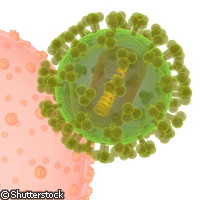EU-funded study maps HIV's migration around Europe
An international team of scientists has mapped the migration of HIV-1 subtype B around Europe using phylogeography or the 'geographic pattern of viral lineages samples from different localities'. Their study of the most prevalent type of HIV currently circulating in Europe provides new insights into the virus's transmission networks, and shows that the pattern of distribution is not uniform across all countries. The results, published in the journal Retrovirology, are an outcome of the SPREAD ('Strategy to control the spread of HIV drug resistance') project, funded with EUR 1.5 million through the 'Key Action Control of Infectious Diseases' priority of the EU's Fifth Framework Programme (FP5). SPREAD researchers, representing 16 European countries, studied viruses from 4,000 newly diagnosed individuals in Europe between 2001 and 2004 in an effort to develop a strategy to control transmission of 'resistant' HIV. The current study also made use of the CATCH ('Combined analysis of resistance transmission over time of chronically and acute infected HIV-patients') project data, which included 2,208 samples from antiretroviral-naïve patients (i.e. patients who had not previously used the antiretroviral drug) collected by national surveillance studies in 19 countries between 1996 and 2002. The current study is the first to use phylogeography to map the movement of the virus among 16 European countries and Israel. According to the authors, 'phylogenies are the "state of the art" in characterising viral genealogy and evolution and also serve as tools to track migration for organisms for which there is no other way to monitor their dispersal'. Previous phylogenetic studies have analysed HIV types by geographic region, but until now none has inferred the history of virus's migration through its phylogeny. The researchers found that in most European countries, the epidemic was introduced by multiple sources, and then spread within local networks. Interestingly, in Poland most of the infections were the result of a single point introduction. According to lead author Dr Dimitrios Paraskevis of the Catholic University of Leuven in Belgium, 'To a large extent, HIV spread within Poland is due to injecting drug users, who make up around half of the HIV-infected population.' 'According to the significant migratory pathways,' the study reads, 'we show that there are considerable differences across Europe. Specifically, Greece, Portugal, Serbia and Spain provide sources shedding HIV-1; Austria, Belgium and Luxembourg, on the other hand, are migratory targets, while for Denmark, Germany, Italy, Israel, Norway, the Netherlands, Sweden, Switzerland and the UK, we inferred significant bidirectional migration. For Poland no significant migratory pathways were inferred.' Luxembourg had the highest rate of 'imported' infections in Europe, with many pathways originating in Portugal. Along with Luxembourg, Austria and Belgium were highlighted as significant HIV migratory targets because of high mobility to these countries. The Netherlands was found to have 'the most diverse geographical origin among newly diagnosed patients'. Because Greece, Portugal and Spain attract many travellers and tourists, especially from central Europe, HIV might migrate from southern to central Europe by way of infected travellers. The findings of the current study suggest that tourists, travellers and migrants from Greece, Portugal, Serbia and Spain actively export HIV-1 subtype B to other European nations. While export of HIV-1 subtype B from Austria, Belgium, Denmark, Germany and Luxembourg was limited, the researchers found that there was significant HIV migration to and from Italy, Israel, Norway, the Netherlands, Sweden, Switzerland and the UK. 'Popular tourist destinations like Greece, Portugal and Spain probably spread HIV with tourists infected during their holidays,' said Dr Paraskevis. 'Viruses move around with travellers - thus health programmes within countries should not only target the national populations; prevention efforts must also be aimed at migrants, travellers and tourists - who are both major sources and targets of HIV.'
Countries
Belgium



